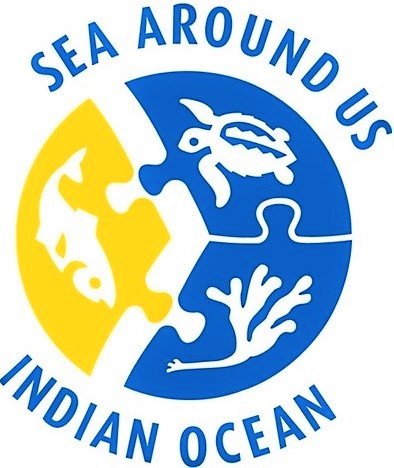Highly subsidized industrial fishing fleets in the Indian Ocean jeopardize fisheries resources and nutrient security
A few big players in the Indian Ocean are disproportionately accessing the region’s fisheries resources empowered by harmful subsidies, thereby challenging the availability of these resources to nutrient-insecure countries.
In a new paper published in npj Ocean Sustainability, researchers with the Sea Around Us – Indian Ocean at the University of Western Australia (UWA) and from the Institute for the Oceans and Fisheries at the University of British Columbia, assessed the provision and spatial distribution of fisheries subsidies in the Indian Ocean. They found that 60 percent of all subsidies provided by governments in this ocean basin are harmful, capacity-enhancing subsidies paid to large-scale industrial fishing fleets by a small number of highly subsidizing countries.
Harmful subsidies are direct or indirect financial transfers from public entities to fishing companies. They include fuel subsidies, non-fuel tax exemptions, access deals that allow one country to fish in the waters of another, boat construction, renewal and modernization support, and the provision of market and storage infrastructure, among others.
Such harmful subsidies enable fishing capacity to increase to a point where the exploitation of fish stocks exceeds the highest catch they can support long-term, effectively resulting in overfishing. In essence, these subsidies allow fleets to keep fishing when it otherwise would not be financially profitable to do so.
“Total fisheries subsidies in the Indian Ocean were estimated at US$3.2 billion in 2018, and our results show that almost US$2 billion were harmful subsidies,” said Vania Andreoli, lead author of the paper and PhD candidate with the Sea Around Us – Indian Ocean. “Thailand, India, Malaysia and Indonesia were the major subsidizers, with these four Indian Ocean Rim countries providing almost 45 per cent of all harmful subsidies in the region.”
“Small-scale fisheries receive far fewer subsidies than industrial fisheries,” Andreoli said. “Harmful subsidies artificially enhance the viability of industrial fleets relative to vessels in the small-scale sector. Yet, in the Indian Ocean small-scale fisheries support millions of jobs and play a crucial role for local nutritional security in already disadvantaged countries.”
Besides harmful subsidies, there are also beneficial and ambiguous fisheries subsidies. Beneficial subsidies promote fisheries resource conservation, management and sustainability, and Australia is a major provider of beneficial subsidies, accounting for 85 percent of all fisheries subsidies in Australia. Ambiguous subsidies can lead to either sustainable management or overexploitation, depending on how and to whom these programs are delivered.
Not only Indian Ocean Rim countries provide their fleets with subsidies. Distant-water fishing fleets from countries outside the Indian Ocean received $260 million in subsidies, with over 70% of these being harmful subsidies. Highly developed East Asian countries, mainly Taiwan, South Korea, China and Japan accounted for more than half of total distant-water fishing fleet subsidies in the Indian Ocean, while the rest were provided by European countries, mainly Spain and France.
“These foreign fleets target mostly the Exclusive Economic Zones (EEZ) of Somalia, Iran, Indonesia, Myanmar and India, as well as High Seas waters,” said Prof Dirk Zeller, co-author of the study and Director of the Sea Around Us – Indian Ocean. “Harmful subsidization encourages the resource-grabbing behavior of distant-water fleets, which has serious consequences for overfishing and resource depletion.”
In addition to scrutinizing the spatial distribution of subsidies, the researchers assessed predictors of subsidization, such as the size of the EEZ and seafood export quantities. They found that large amounts of seafood exports correlate with high levels of harmful subsidies provided by Indian Ocean Rim countries to their industrial fishing fleets.
“In other words, industry profit is prioritized over food and nutritional security of people in a region that is home to one-third of the world’s population. It becomes a game of survival of the richest, not the fittest” Zeller said. “This is highly problematic in light of the universal endeavor to End Hunger, a globally agreed UN Sustainable Development Goal. These harmful subsidies support and exacerbate overfishing and therefore diminish availability of seafood and associated critical nutrients for the regional populations that depend on them for their food and nutritional security.”
For the researchers, these results highlight the urgency of reducing and eliminating harmful subsidies for industrial fisheries operating in the Indian Ocean. They also point to the need to enhance and restructure small-scale sector subsidization towards more beneficial subsidies that could take the form of increased co-management and local community support, as well as active support for spatial management and habitat restoration. "Subsidies should be redirected towards the implementation and management of no-take Marine Protected Areas, which have been shown to provide numerous co-benefits beyond biodiversity conservation. They also increase food and nutrient security for local populations due to fish biomass spillover into adjacent areas open to local small-scale fisheries," concluded Prof Jessica Meeuwig, Wen Family Chair of Conservation and Director of the Marine Futures Lab at UWA.
The paper “Fisheries subsidies exacerbate inequities in accessing seafood nutrients in the Indian Ocean” was published in npj Ocean Sustainability, https://doi.org/10.1038/s44183-023-00031-9

